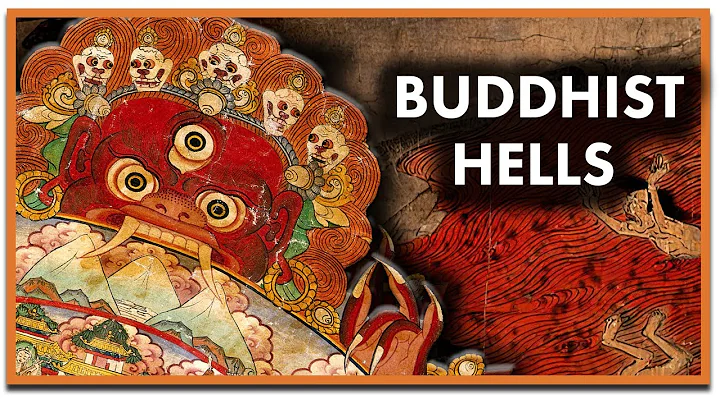"Five Mountains and Ten Temples" is a record of the Southern Song Dynasty Zen temples and temples written by Japanese monks in the Song Dynasty. It is the most detailed and complete important document about the temple architecture in Jiangnan at that time. Its scroll was designated as a Japanese national treasure.
During the Song and Yuan Dynasties , Buddhist temples in Jiangnan, China reached their peak and spread to surrounding Japan, exerting far-reaching influence. Five Mountains and Ten Temples refers to the five major temples and the ten major temples with the highest temples at that time.
"Five Mountains" are Jingshan Temple , Lingyin Temple , Jingci Temple in today's Hangzhou, Ningbo 's Tiantong Temple , Ashoka Temple ;
"Ten Temples" are today's Fajing Zen in Zhongtianzhu, Hangzhou Temples, Huzhou Daochang Mountain Husheng Wanshou Temple, Nanjing Linggu Temple, Nanjing Dabaoen Temple, Ningbo Xuedou Temple, Wenzhou Jiangxin Temple, Fuzhou Xuefeng Temple, Jinhua Yiwu Shuanglin Temple, Suzhou Huqiu Yunyan Temple, Taizhou Tiantai Guoqing Temple.

Jingshan Temple in Hangzhou among the "Five Mountains"
There are 11 temples in Zhejiang Province, which should be related to the establishment of the capital of the Southern Song Dynasty royal family in Lin'an. The Five Mountains and Ten Temples designated by the Southern Song Dynasty were very popular during the Song and Yuan Dynasties. Later religious academies and law academies also imitated the Five Mountains and Ten Temples, which were called the Five Mountains and Ten Temples together with the Zen Yuan. It also had a great influence on Japanese Buddhism.

Lingyin Temple in Hangzhou of "Five Mountains"
In 1191, the year before Minamoto Yoritomo opened the Kamakura Shogunate , the Japanese monk Einishi returned to Japan from China for the second time and began to devote himself to The Linji sect Huanglong sect Zen method learned in the Southern Song Dynasty was introduced to Japan. Starting from Rongxi, Japanese monks such as Junqiu, Jue'a, Dogen, and Yuan'er Benyuan came to the Southern Song Dynasty to practice Zen. After returning to China, they all carried out activities to spread Zen within a certain scope. Purely Chinese Zen Buddhism reached its peak of spread to Japan at this time, and a large number of Japanese monks came to China to study Zen Buddhism.

"Five Mountains" Jingci Temple in Hangzhou
The eminent monk Wu Zhun of Jingshan Temple accepted seven Japanese monks as disciples. Among them, Yuan Er Bian Yuan, Xing Cai Fa Xing, etc. all became the founders of famous mountain temples in Japan after returning to China. In 1246, the Chinese Zen monk Ranxi Dolong went to Japan and directly recruited disciples in Japan to spread the Zen precepts.

无正师范
In the first year of Kaiqing of Song Lizong (1259), the Japanese monk Che Tongyi participated in the Song Dynasty and visited the Five Mountains and Ten Temples. After returning to China, he wrote the "Picture of Five Mountains and Ten Temples". After the publication of the "Five Mountains and Ten Temples", Japanese Buddhism fully imitated China and established its own Five Mountains and Ten Temples, imitating the architectural style of Song Feng Zen Temple and imitating the Zen lifestyle. Chinese Zen rules, daily living systems, poems, verses, etc. are also quite popular in Japanese Zen temples.
The illustrations in this book were all drawn by Japanese monk Tetsutsugi Yosuke after his field trips to China. Everything is meticulous and complicated, even toilet pits and every piece of furniture must be painted.
"Five Mountains and Ten Temples" contains a total of 22 pieces of furniture, including 2 beddings, 5 chairs, 2 tables, 3 tables, 2 screens, 2 cupboards, 1 seat, 1 Buddhist altar, There are 4 pieces of racks, showing the basic characteristics of temple furniture in the Southern Song Dynasty.

Schematic diagram of the enthronement of the abbot
"Five Mountains and Ten Temples" is a record of the Zen monastery in the Southern Song Dynasty. The temple furniture reflected in it was a very sophisticated type of furniture among all kinds of furniture at that time. It can be said to be the essence of Buddhist furniture in that period.

However, maybe in the eyes of Song people at that time, these Japanese guys were simply obsessive-compulsive. However, not a single piece of architecture or furniture from these Song Dynasty temples has been left in China. These drawings have become the most precious information for studying the architecture, furniture, interior decoration and lifestyle of the Southern Song people.
For example, these Japanese monks took the trouble to paint the face-washing place (water tank) of Asoka Temple in Ningbo. Where to put dental medicine, where to put hand towels, where to put the stove, everything is drawn.

The bathroom floor plan of Ashoka Temple in Ningbo
Even the toilet is drawn so carefully. The upper part of the picture is the toilet trough, and the lower part is the wash basin. The ashes for cleaning hands, the incense burner for deodorizing, and the railing for hanging hand towels are all painted.

When this Japanese monk drew the toilet picture, I wonder what the expressions of the monks at Jinshan Temple in Zhenjiang would be like...
There are also furniture:



The floor plan also brings a lot of historical information, such as the floor plan of Tiantong Temple in Ningbo.

The Zen temple architecture of the Song and Yuan Dynasties, represented by the Five Mountains and Ten Temples, almost no longer exists in China, and we know very little about their appearance, shape, etc. Fortunately, there are so many obsessive-compulsive neighbors who take the trouble to record every plant and tree in your house, and finally they can leave a lot of information...

"Five Mountains and Ten Temples" collected by Mahayana Temple in Kanazawa, Japan

















![[English] Who Am I - Lecture 1 - Ven. Guan Cheng - DayDayNews](https://i.ytimg.com/vi/KU0fUs2It5o/hq720.jpg?sqp=-oaymwEcCNAFEJQDSFXyq4qpAw4IARUAAIhCGAFwAcABBg==&rs=AOn4CLDFpQUN_QwRfC7bmP4sUadq-RcYdg)
![A Moving Masterpiece 清明上河图 [English narration] - DayDayNews](https://i.ytimg.com/vi/kxff-4GktOI/hqdefault.jpg?sqp=-oaymwEcCOADEI4CSFXyq4qpAw4IARUAAIhCGAFwAcABBg==&rs=AOn4CLBtHGLeUpJNCYDJYnZTuISQ1N5Vag)


